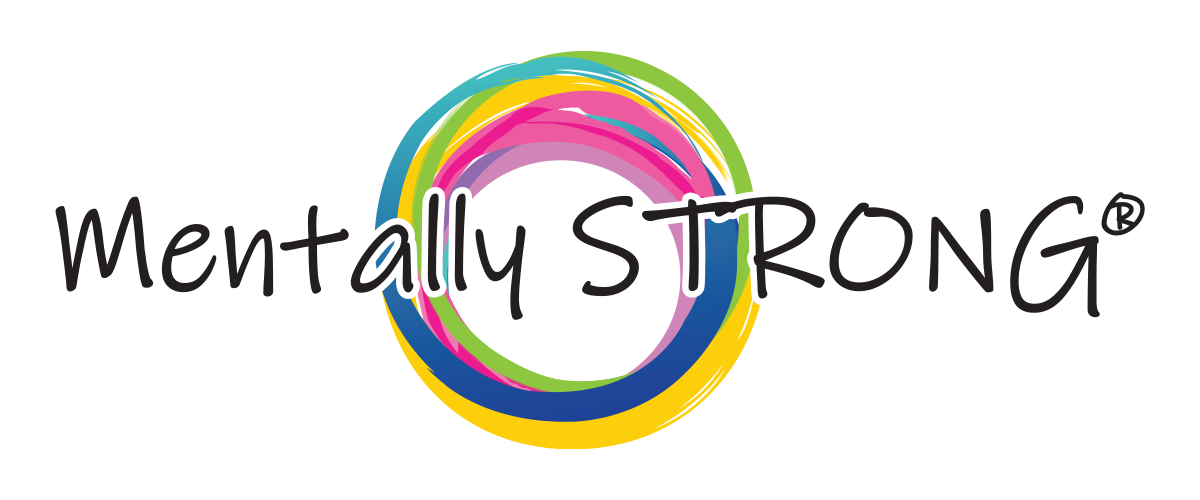Introduction
Grief is not just an emotion; it’s love with nowhere to go. When you lose someone you deeply care for, the love you had for them doesn’t just disappear. It stays with you, yearning for connection, but with the person gone, it has nowhere to channel itself. This is the essence of grief—it’s the love you still hold, searching for a place to reside. I often describe grief as a journey that redefines your love, helping you find new ways to honor the person you’ve lost. It’s in these moments of deep sorrow that you might find comfort in knowing that this grief is a testament to the love you shared.
Understanding Grief and Loss
Grief and loss are intertwined in a way that shapes the very core of our emotional being. When you experience loss, the grief that follows is a natural response, an acknowledgment of the deep connection you had with the person who is no longer there. My personal journey with grief—having lost 3 of my children and my husband—has profoundly shaped my understanding of these emotions. Through my own experiences, I’ve come to realize that grief is a reflection of the love we carry, and while it may feel unbearable at times, it also serves as a reminder of the depth of that love.
The Impact of Loss on Emotional Well-being
The emotional impact of losing someone you love can be overwhelming, touching every aspect of your life. When you lose a loved one, especially unexpectedly, the shock and pain can be so intense that it feels like your entire world has been turned upside down. You might find yourself questioning everything, feeling as though a piece of your heart has been ripped away, leaving an emptiness that nothing seems to fill. One of my clients shared how, after the sudden loss of her husband, she would cry during the long drives to and from her children’s school, feeling the weight of her grief with every mile.
These feelings of sadness, numbness, disbelief, and even anger are all normal responses to such a profound loss. It’s essential to recognize that these emotions are valid and part of the grieving process. Allow yourself to feel them, to sit with them, and to honor the depth of your pain. Grief is not something to be rushed or minimized; it’s a journey that unfolds in its own time, demanding patience and self-compassion.
No Stages of Grief
The idea that grief follows a set of stages is a common misconception. In reality, grief is a highly personal experience that doesn’t adhere to any specific timeline or pattern. Everyone’s journey through grief is different, and it’s okay if your experience doesn’t match what you’ve read or heard.
The Myth of Sequential Stages
The idea of sequential stages in grief often gives a false sense of direction, making it seem like there’s a clear path or timeline to follow. I’ve been there, wondering when the sadness will end, when the heaviness will lift, and when life will feel “normal” again. But the reality is, grief doesn’t fit into neat boxes or stages. It’s messy, unpredictable, and deeply personal. The concept of moving through set stages—like denial, anger, bargaining, depression, and acceptance—can make you feel like you’re failing if you’re not progressing “correctly.”
What I’ve learned from my journey is that grief is not linear. After losing my children, I tried to find comfort in these stages, but they never quite fit. Sometimes, I’d think I was moving forward, only to be pulled back into intense sadness or anger. Grief is cyclical; it’s like waves that come and go, sometimes with more force than you expect. We need to let go of the expectation that there’s a right way to grieve and instead focus on what feels true to us in each moment. Grief, in all its forms, is valid—whether it’s days of peace followed by an unexpected breakdown or the quiet moments when the memories come flooding back. That’s why I emphasize controlled grief—taking charge of your grief process in a way that works for you, not against you.
Embracing the Complexity of Grief

Grief is inherently complex, touching every part of your being—physical, emotional, mental, and spiritual. It’s not just one thing; it’s many things happening simultaneously, sometimes overwhelming in intensity. The complexity of grief means that it can’t be neatly categorized or fully understood in any one way. It’s about the love you had, the future you envisioned, and the life that now feels disrupted.
Understanding and embracing this complexity is crucial to finding a path forward. Rather than expecting to move through your grief in a predictable way, it’s important to accept that your emotions may be contradictory, confusing, and ever-changing. One day, you might feel like you’re coping well, and the next, you could be overwhelmed by sadness or anger. This is all part of the process. By embracing the full spectrum of your emotions and experiences, you create space for healing to occur naturally, in its own time.
Grief as a Nonlinear Process
Grief is non-linear, meaning that it doesn’t follow a straight path or a set of stages. You might find yourself circling back to emotions you thought you had moved past, or suddenly feeling intense grief months or even years after the loss. This nonlinear nature of grief can be disorienting, but it’s also a reminder that healing is a journey, not a destination. One widow described how, years after her husband’s death, a certain song or scent would bring the grief back to the surface as if no time had passed. These moments of resurfacing grief are not setbacks; they are reminders of the love that continues to exist, even after loss. Allow yourself to experience these waves of grief without judgment, knowing that they are a natural part of the healing process.
Controlled Grief
Controlled grief is a concept that I’ve developed through my own experiences. When my son Reggie passed away, I found myself overwhelmed by the intensity of the pain. I began to set aside specific times to confront my grief, allowing myself to cry and fully experience those emotions without letting them dominate every moment of my life – I would take the time, sit with pictures and cry, and I would allow the pain and intensity of that pain to be released from my body. Controlled grief involves consciously deciding when and how to engage with your grief, allowing you to process it in manageable doses. This approach helped me to live my daily life while still honoring the deep loss I felt.
Navigating Grief in Daily Life
Incorporating grief into your daily life can feel overwhelming, but finding a balance is key to managing it. Controlled grief is about intentionally setting aside time to process your emotions, so that grief doesn’t overwhelm every aspect of your life. By creating specific times to grieve—whether it’s through journaling, reflecting on memories, or simply allowing yourself to cry—you can manage your emotions in a way that doesn’t interfere with your ability to function in daily life. This doesn’t mean avoiding grief; it means giving it the space it needs, without letting it consume you entirely. It’s about finding a way to live with your grief, rather than being controlled by it.
The Role of Self-Care in Managing Grief
Self-care is an essential part of navigating grief. Taking care of yourself—physically, emotionally, and mentally—is not just important; it’s necessary. Grief can take a toll on your body and mind, leaving you feeling exhausted, anxious, or depressed. Practicing self-care means being gentle with yourself, giving yourself permission to rest, and engaging in activities that bring you comfort. This might include taking a walk in nature, spending time with loved ones, or simply taking a few moments each day to breathe deeply and center yourself. Self-care isn’t about avoiding grief; it’s about ensuring that you have the strength and resilience to face it. Remember, self-care is not selfish; it’s a vital part of the healing process.
Healthy vs. Unhealthy Grieving
It’s important to recognize the difference between healthy and unhealthy grieving. Healthy grieving involves allowing yourself to feel and process your emotions, even when they’re painful. It’s about finding ways to express your grief, whether through talking, writing, or creative outlets, and seeking support when needed.

Unhealthy grieving, on the other hand, can involve suppressing your emotions, avoiding the pain, or turning to unhealthy coping mechanisms like substance abuse. When you hold onto grief in unhealthy ways, you let it become a battle wound that never heals. It’s crucial to recognize when your grief is leading you down a path of self-destruction and to take steps to steer yourself back towards healthier coping mechanisms. This might involve seeking professional help, joining a support group, or simply reaching out to a friend or family member for support. Healing is not about forgetting or moving on; it’s about learning to live with your grief in a way that honors your loved one while also taking care of yourself.
Finding Support
Grieving is an intensely personal experience, but that doesn’t mean you have to go through it alone. Support can come from many places, and it’s important to seek out the help that feels right for you.
In Yourself
As someone who has walked this path many times, I’ve learned that self-compassion is key. Allow yourself the space to feel your emotions without judgment, understanding that it’s okay to not be okay. Give yourself permission to grieve in your own way and in your own time. Remember, you are not just surviving this loss—you are finding new ways to live with it, honoring the love that remains even in the absence of the person you’ve lost.
Building Resilience Through Self-Reflection
Building resilience in the face of grief begins with self-reflection. Taking time to understand your emotions and the impact of your loss can help you develop inner strength. This is not about forcing yourself to move on but about recognizing your own capacity to endure and eventually heal. Reflecting on your grief journey allows you to identify what you need at each stage, whether it’s more time alone, connection with others, or simply a break from the intensity of your emotions. Through self-reflection, you can begin to rebuild your sense of self and find ways to carry your grief in a way that strengthens, rather than diminishes, you.
Finding support within yourself is an essential part of the grieving process. While it’s important to lean on others, you must also recognize the strength and resilience you carry within. Grief can often feel like an all-consuming force, but within you lies the capacity to endure, heal, and grow through this experience. The Grieve with Purpose course is designed to help you tap into that inner strength, guiding you through the emotional turmoil and helping you build the mental resilience needed to navigate your grief.
Self-Care Practices to Manage Grief
Engaging in regular self-care practices is crucial for managing grief. This can include physical activities like exercise or yoga, which help release tension and improve mood, as well as mental and emotional practices like journaling, meditation, or art. One person described how setting aside time each evening to reflect on her day and acknowledge her feelings helped her manage the overwhelming emotions that came with her loss. These practices provide a way to process your grief in small, manageable doses, allowing you to stay connected to your feelings without being overwhelmed by them. Remember, self-care is not about escaping your grief but about giving yourself the tools and support you need to cope with it in a healthy way.
In Friends and Family
Your close relationships can be a crucial source of comfort during times of grief. However, not everyone will know how to support you, and that’s okay. I suggest being open about your needs—whether that means asking for a listening ear or simply some quiet companionship.
The Importance of a Supportive Network
A strong support network is invaluable when navigating grief. Friends and family can provide comfort, understanding, and a sense of connection during this difficult time. It’s important to lean on those who care about you and allow them to support you in whatever way they can. This might mean reaching out to talk when you’re feeling down, accepting help with daily tasks, or simply spending time with loved ones to feel less alone. Remember that it’s okay to ask for help and that your loved ones likely want to be there for you, even if they’re unsure of how to offer support.
Communicating Needs and Boundaries
It is important to let others know what you need—whether it’s space, a listening ear, or practical help—and to set boundaries when necessary. One of the most challenging aspects of grief can be navigating the expectations of others, especially if they don’t fully understand your experience. Being clear about your needs helps prevent misunderstandings and allows you to protect your emotional well-being. It’s okay to say no to things that feel overwhelming and to prioritize your own healing process.
In Groups
Grief support groups provide a space where you can connect with others who understand what you’re going through. These groups offer a sense of community and shared experience that can be incredibly healing.
Benefits of Grief Support Groups

Grief support groups offer a unique form of solace that can be deeply healing. Being in the presence of others who are also grieving creates a sense of understanding and connection that can be difficult to find elsewhere. Support groups provide a space where you can speak openly about your grief without fear of judgment, and where you can gain insights from others who have walked a similar path. These groups can be an essential part of the healing process, offering comfort and companionship during a time when you might otherwise feel isolated.
Seeking Professional Help and Therapy
Seeking professional help, such as therapy or counseling, is a crucial step for many people navigating grief. Experienced therapists offer a safe and supportive environment to explore your emotions, work through trauma, and develop coping strategies. Therapy can provide the tools you need to manage your grief in a healthy way and can be particularly beneficial if you’re struggling with complicated grief or if your emotions feel overwhelming. A therapist can help you untangle the complex web of feelings that grief can create and offer guidance on how to move forward in a way that honors your loved one while also taking care of yourself.
Community Resources for Grief Support
In addition to personal and professional support, community resources can be invaluable during the grieving process. Many communities offer grief support groups, workshops, and other resources designed to help individuals navigate their grief. These resources can provide additional support, education, and connection with others who are also grieving. They offer a sense of belonging and community, reminding you that you are not alone in your experience. Whether it’s a local support group, a grief retreat, or an online community, these resources can play a vital role in your healing journey, providing additional layers of support and understanding.
Embracing Grief
Embracing grief doesn’t mean being overwhelmed by it; rather, it’s about accepting it as part of your journey. Grief is not something to be feared or avoided but something to be acknowledged and honored. I encourage you to embrace your grief as a way of continuing to express the love you hold for the person you’ve lost.
The Role of Rituals and Memorials
Rituals and memorials play a significant role in the grieving process, offering ways to honor the memory of your loved one. Engaging in rituals, whether it’s lighting a candle, visiting a gravesite, or creating a memory box, can provide comfort and a sense of connection. These acts allow you to express your grief in a tangible way, creating moments of reflection and remembrance. Rituals and memorials can be deeply personal, reflecting your unique relationship with the person you’ve lost. They serve as a bridge between the past and the present, allowing you to carry your loved one’s memory forward as you navigate your grief.
Finding Meaning in Loss
Finding meaning in loss is not about making sense of the tragedy but about discovering ways to honor your loved one and integrate their memory into your life. This might involve creating a legacy project, engaging in volunteer work, or simply finding ways to live out the values your loved one embodied. While grief is forever, it’s possible to find moments of joy and meaning even in the midst of pain. By focusing on the love you shared and the impact your loved one had on your life, you can find a sense of purpose that helps you navigate the ongoing journey of grief.
Moving Forward with Grief
Moving forward with grief doesn’t mean leaving your loved one behind; it means finding a way to carry their memory with you as you continue to live your life. Grief will always be a part of you, but it doesn’t have to define you. Moving forward is about finding a balance between honoring your loved one’s memory and allowing yourself to experience joy, love, and connection again. This process is unique to each individual, and it’s important to be patient with yourself as you navigate it. As one person shared, even years after a significant loss, certain moments or triggers can bring the grief back to the surface. This is a normal part of the grieving process, and it’s okay to experience these moments without feeling like you’ve regressed. Moving forward with grief is about embracing the full range of your emotions, honoring your loved one’s memory, and allowing yourself to live fully in the present.
Walking Through Grief With Strength
Grief is a journey that requires immense strength, but you don’t have to walk it alone. My experiences with loss have taught me that while grief can be overwhelming, it is also a powerful force for healing and growth. If you find yourself struggling with your grief, don’t hesitate to seek support—whether through exploring options for grief support, utilizing the resources available through the Mentally STRONG Method, or simply reaching out to us. Remember, your grief is a reflection of your love, and by acknowledging and embracing it, you’re honoring the person you’ve lost. I am here to walk this journey with you, offering both professional expertise and personal understanding.

